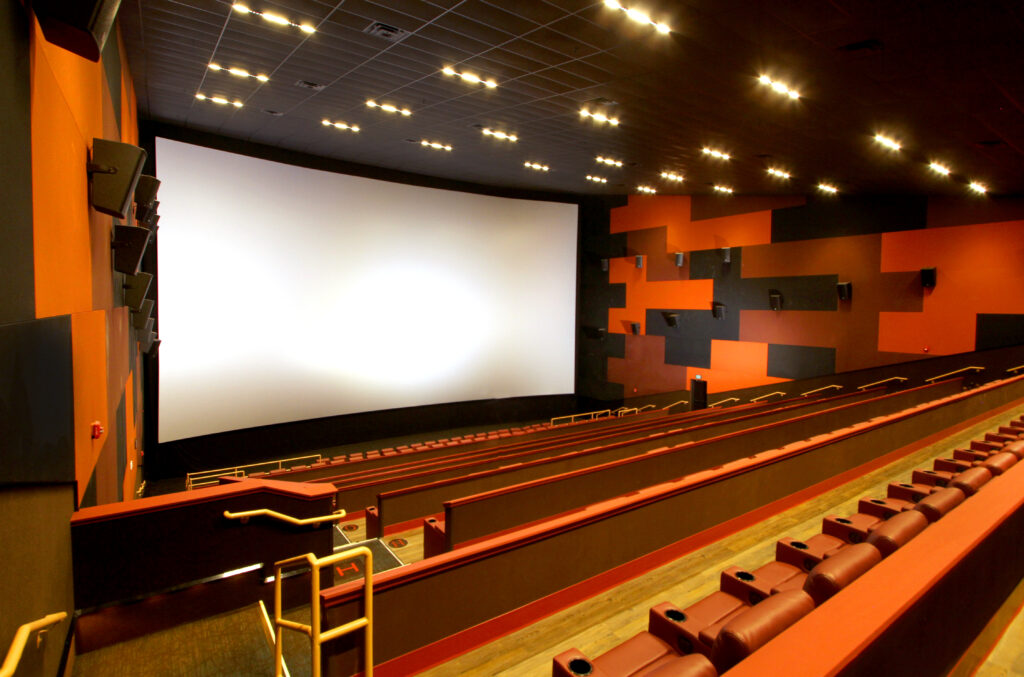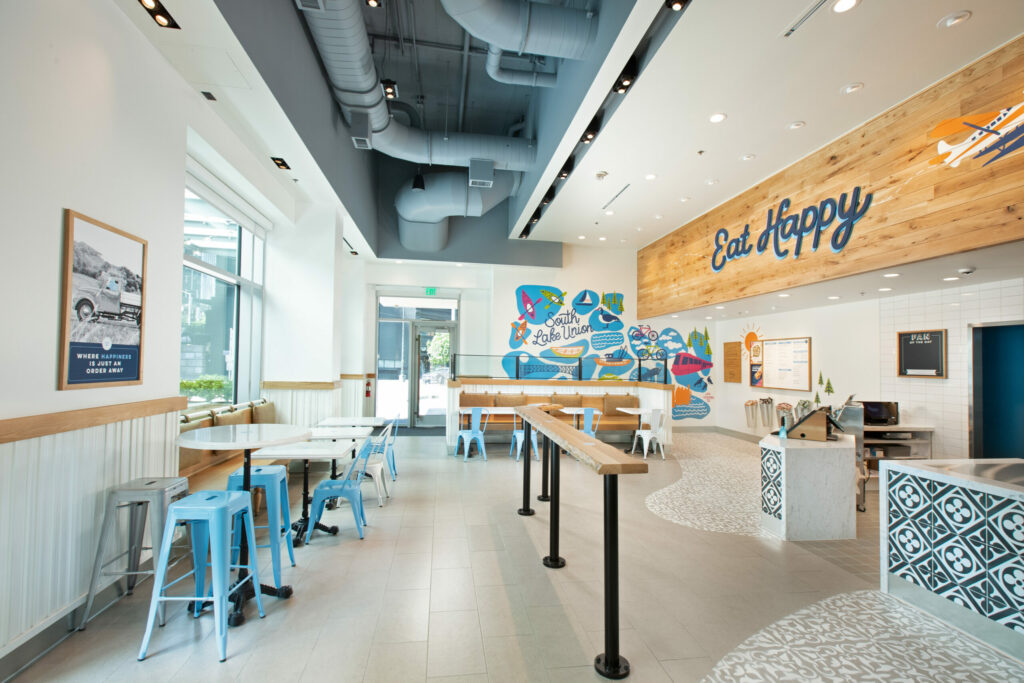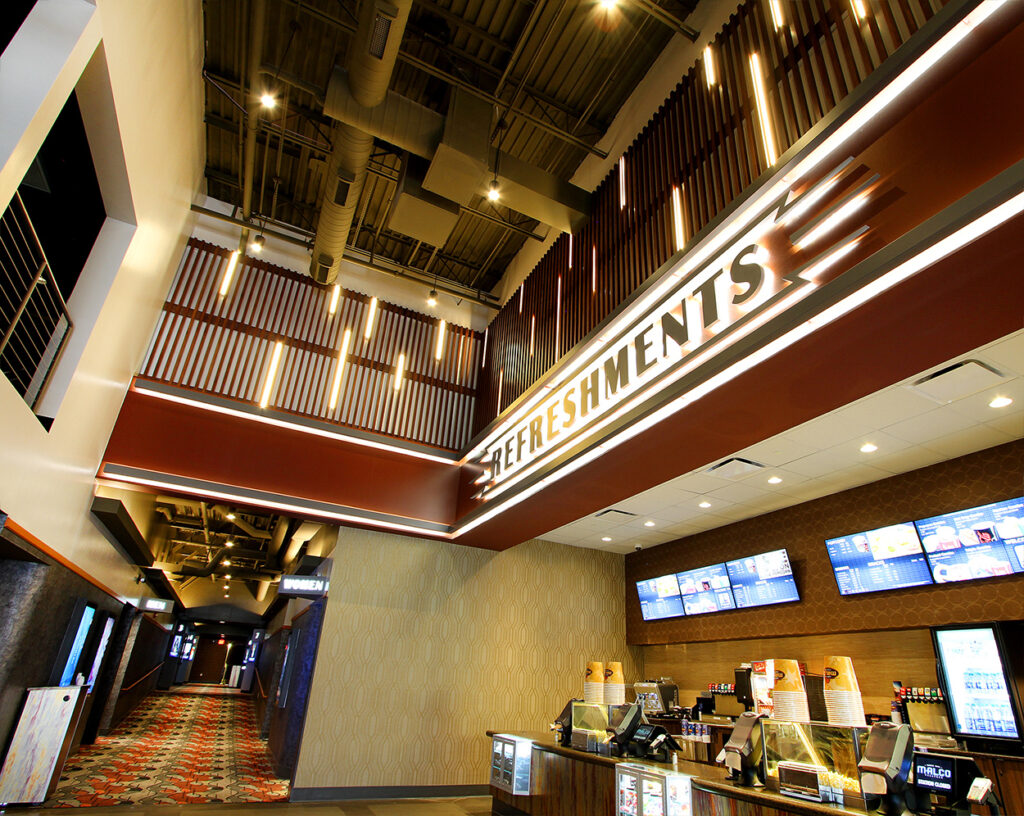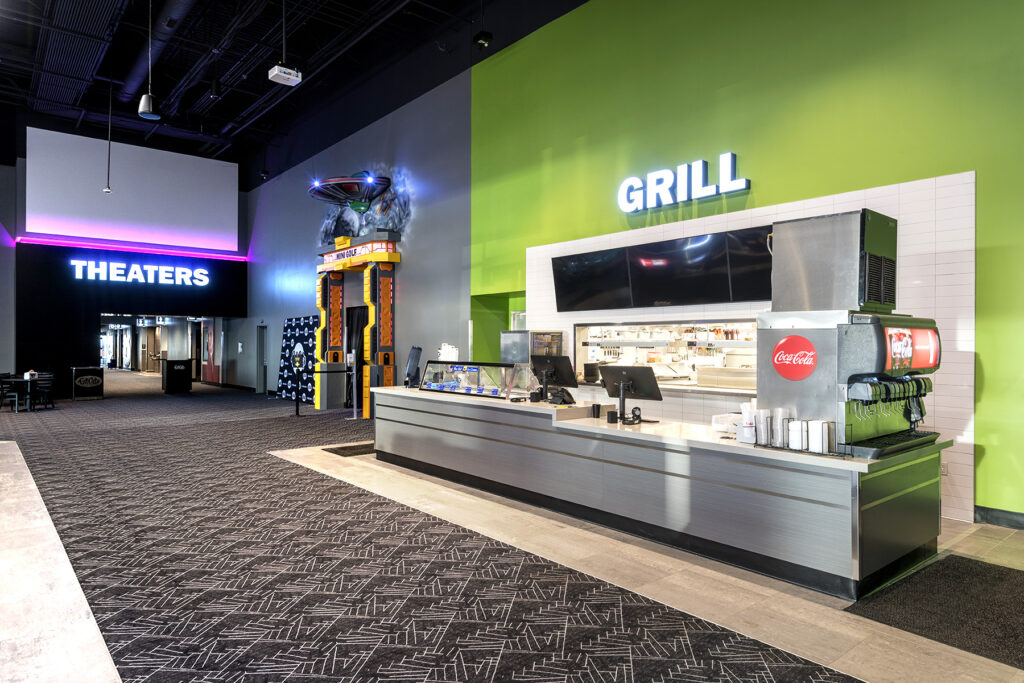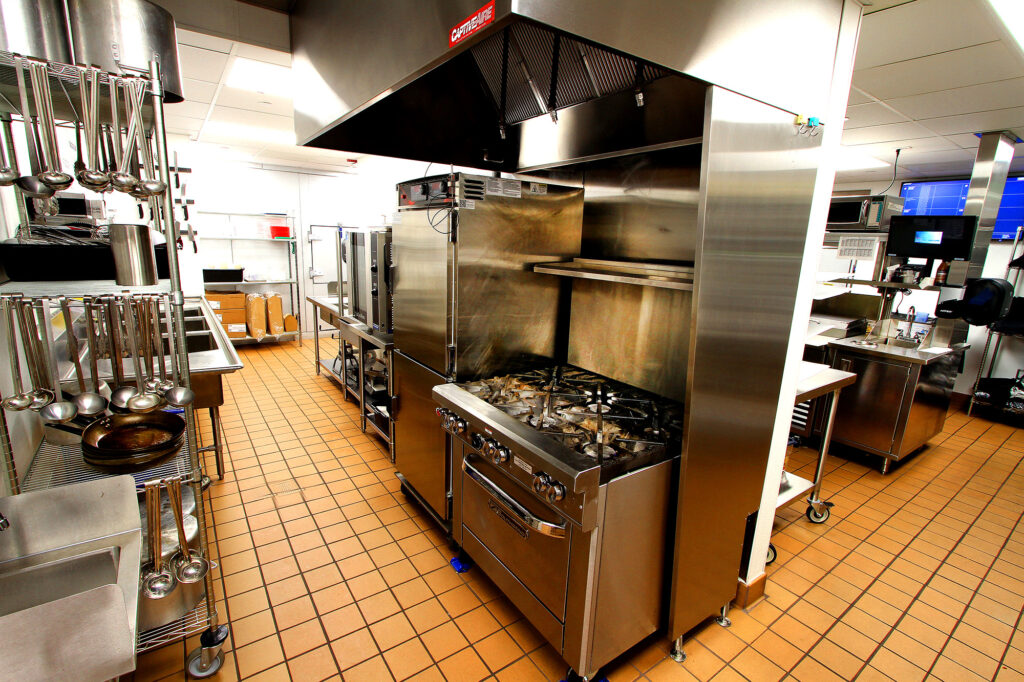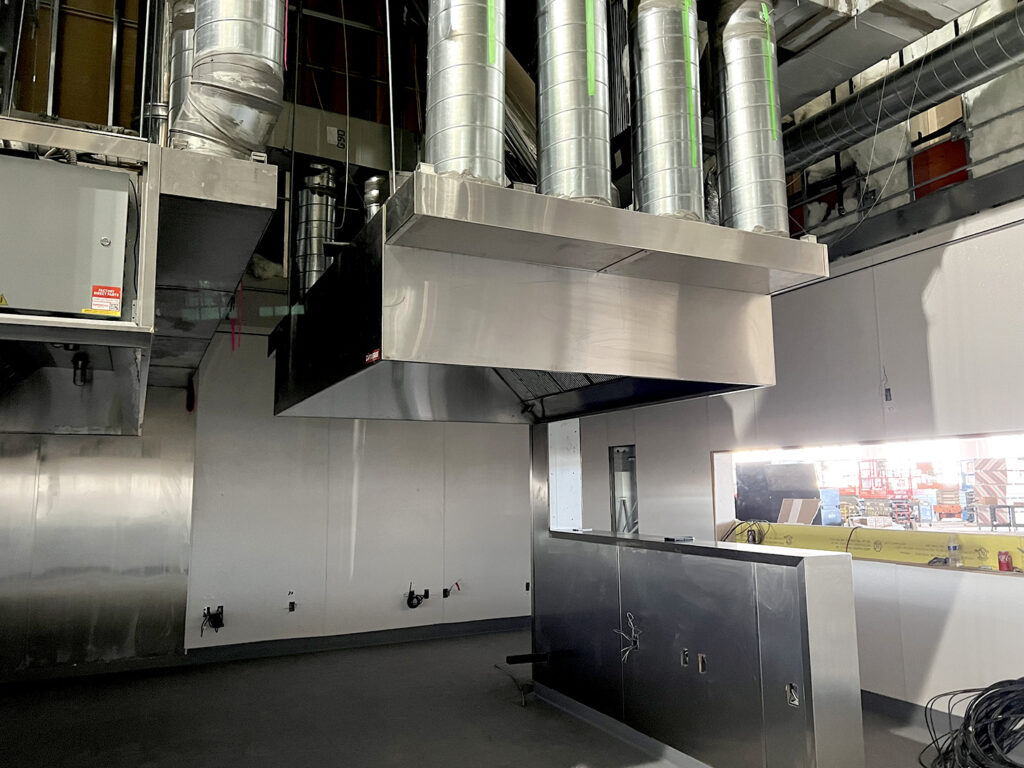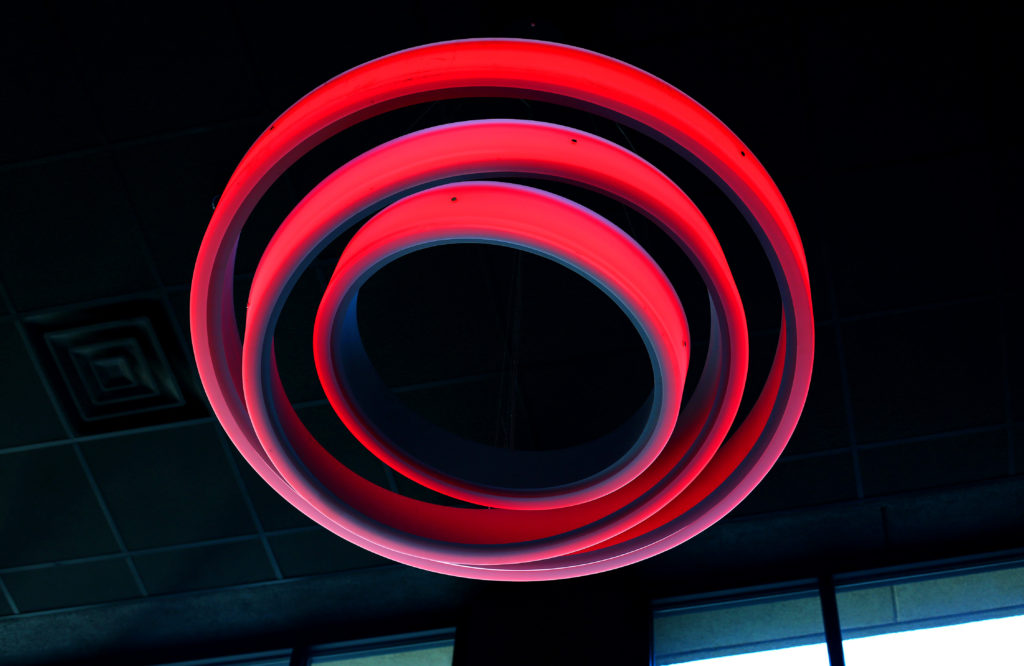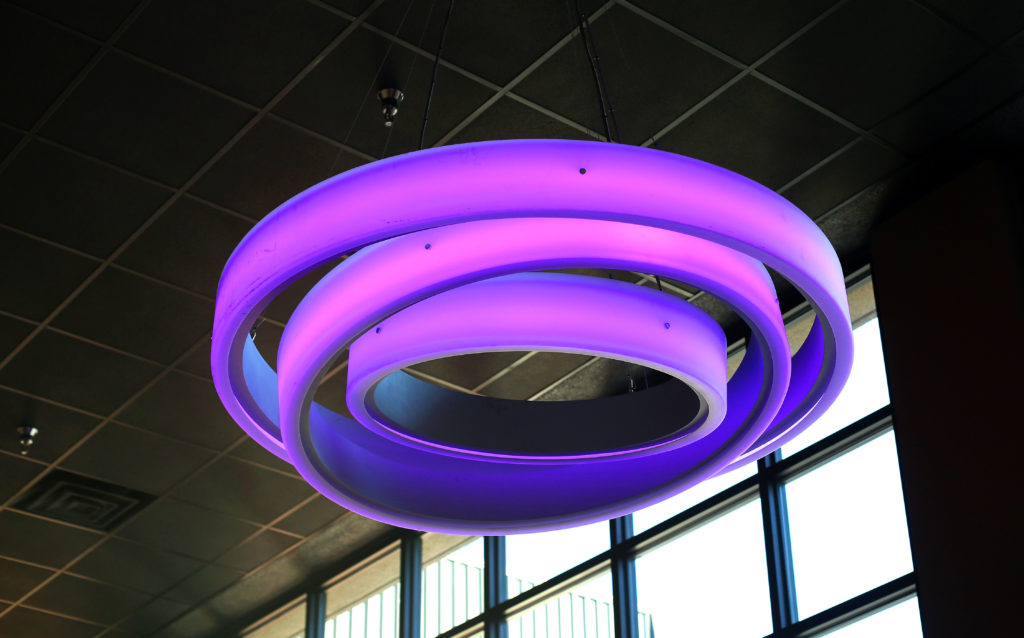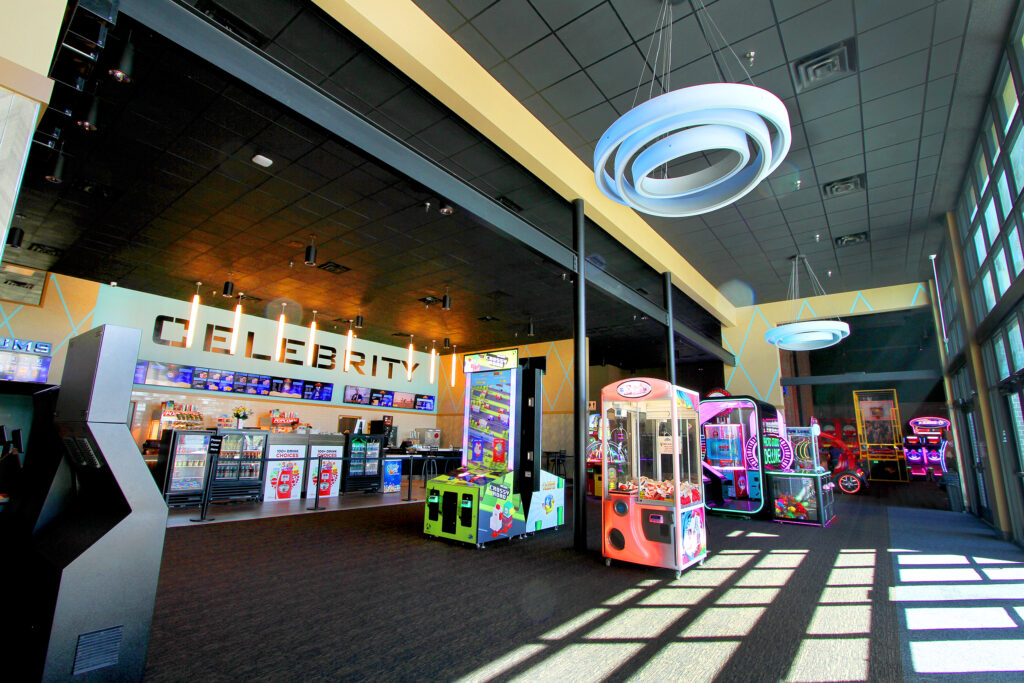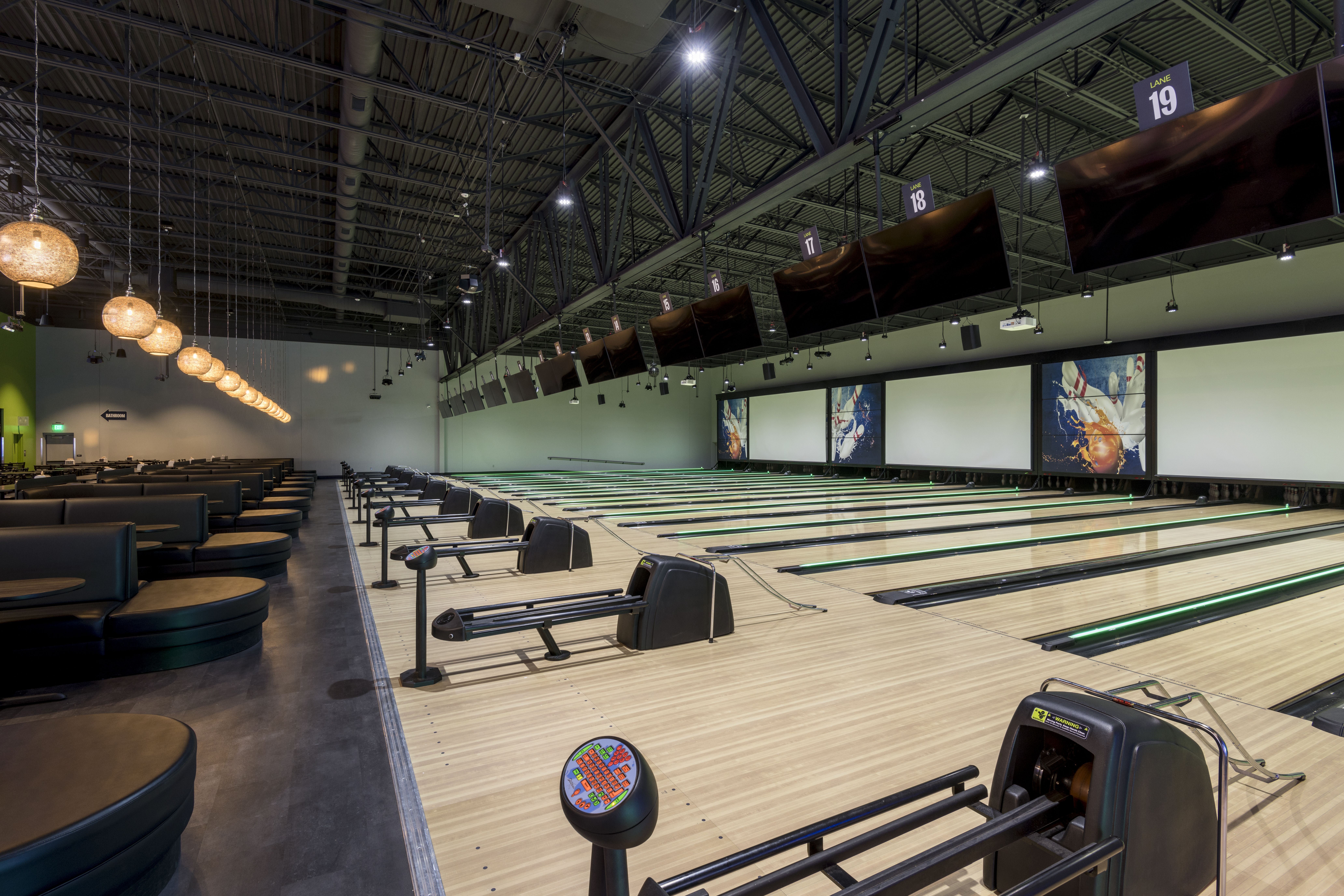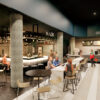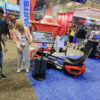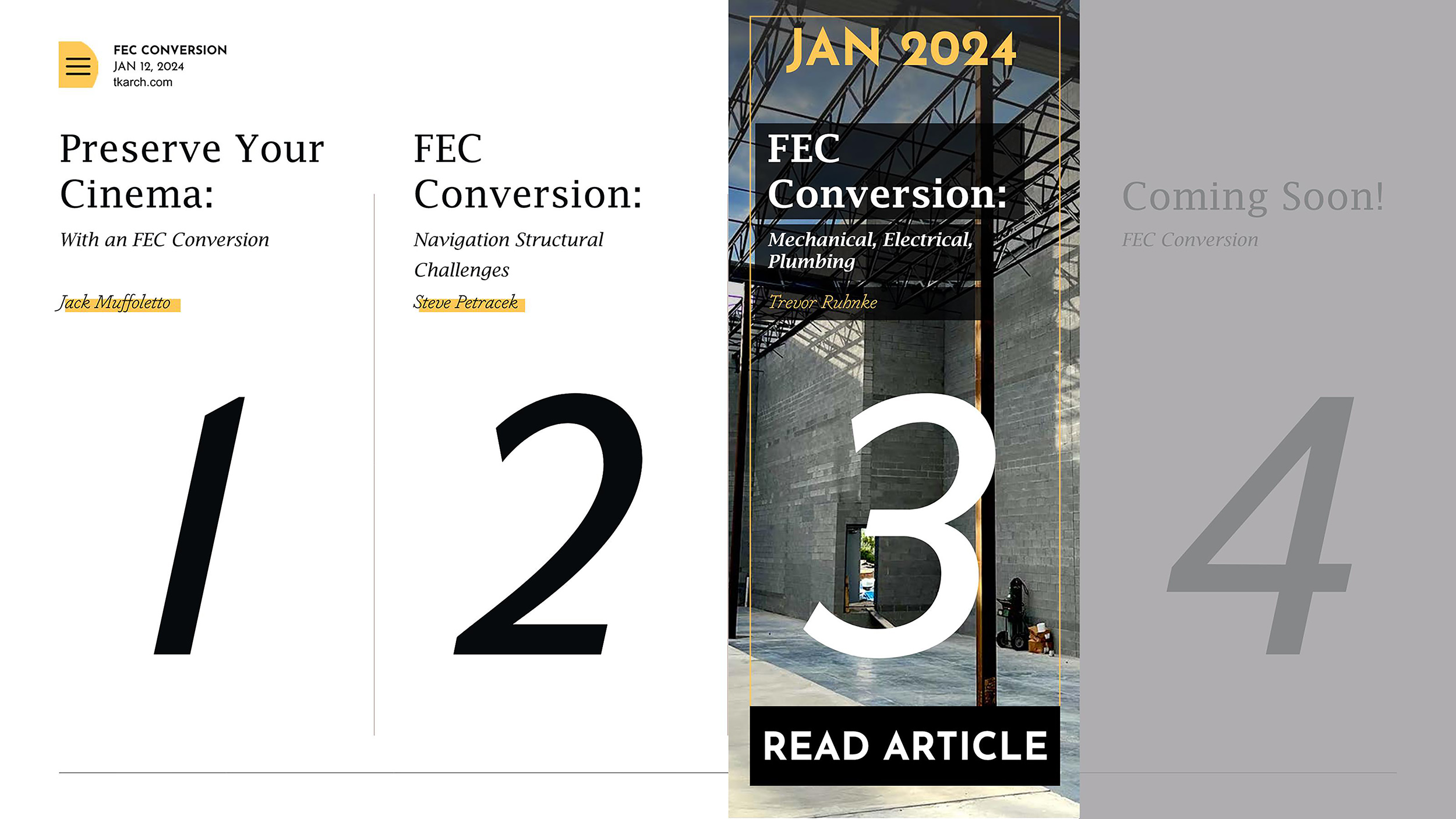
by Trevor Ruhnke, Principal
January, 15th 2024
Welcome back! If you’ve been following along, you know we’ve been on a journey of transformation, exploring the prospect of turning a section of your traditional theatre into a dynamic entertainment facility. We have delved into the architectural and structural aspects, laying the ground work for a space that promises a multitude of revenue stream opportunities. As we continue our exploration, it’s time to shift our spotlight backstage — the Mechanical, Electrical, and Plumbing systems. In this next installment of our blog series we reflect on the intricate dance of these systems and how their modification plays a pivotal role in bringing our entertainment projects to life!
Mechanical
Auditorium HVAC systems are designed to serve large numbers of people at high density within the space. This design translates very well to an entertainment concept. Although the number of customers is reduced, there is an offsetting increase in the needed cooling load from games and other electrical equipment. Often, the existing equipment may be re-used to serve the new space’s layout. However, evaluations of the equipment are warranted at this time. If the equipment is near the end of its useful life, replacement with newer, more efficient, equipment during the construction phase will be less impactful. Replacement equipment will also be tailored to the new layouts and required loads. Any new equipment may remain in the original location to help reduce cost and impact.
Although ductwork and distribution systems would often continue to function appropriately, the aesthetics may be poor. Many entertainment complexes utilize an open ceiling concept. Ductwork designed for above ceiling installation is typically rectangular with flexible ductwork extending to ceiling mounted diffusers. In an open ceiling situation large round ductwork painted to match the structure is normally seen. However, in some situations the ductwork may be painted a contrasting color matching the rest of the facility to provide another element of interest.
Facility changes often also include expanded food and beverage options. If the facility does not already have a kitchen or cooking options, this is the time to add them. If cooking is limited, expanding the cookline and menu is a good pair with the new entertainment options. This typically includes a true Kitchen exhaust system with grease hoods like you find in restaurants. While cooklines are traditionally located in the back of house areas they can also be in view of the customers adding a unique visual element.
Electrical
Many parts of the entertainment complex have high electrical demands whether that is from arcade games, bowling equipment, or general AV equipment. Luckily, auditoriums also have a high electrical demand. Although the requirements are different between the two space types often the original Theater electrical distribution is adequate for most conversions.
Often electrical panels serving auditoriums are located on the mezzanine near the projection equipment. If the mezzanine is to be retained during the renovation, it is possible they can be re-used. However, it may be more cost efficient to relocate or replace the panels and install them closer to the new equipment. If the mezzanine spaces are to be removed for the new space design new electrical distribution is generally needed. Replacement of a portion of the distribution can allow for better consolidation of circuits and a more efficient and cost-effective construction.
Bowling systems generally require additional electrical infrastructure. Additional panels are needed to separate the pin equipment and scoring equipment. There is a difference in electrical load requirements between traditional bowling equipment and newer string type systems. While electrical modifications do not typically drive the choice of options to include in an entertainment renovation, careful consideration can help minimize the cost impact.
Plumbing
Renovation from auditoriums to entertainment often leads to a reduction in the code required occupant count. This means the total number of required restrooms is reduced. Since the restrooms are often located near the promenade, they may need to be relocated to accommodate the open floor needed for the entertainment concept. New restroom locations must be coordinated with the slope of the underfloor piping system and that can dictate the final locations.
If the facility does not already have a kitchen, then a grease waste system and grease trap will be required. Traditionally adding the system requires a grease trap installed outside of the building. In some instances, with a smaller cooking operation an in-floor model may be acceptable. Whichever system is included, periodic grease removal and maintaining the trap is of utmost importance.
If a bar or kitchen is added during the renovation, this often requires significant removal of the floor in on grade buildings to facilitate installation of piping. This is needed for drainage, drink line conduits, and sometimes water piping. Coordination between Architectural and MEP design can help remove some of these requirements, helping to lower costs.
Conclusion
In conclusion, there is no doubt that converting auditoriums into Entertainment Centers is the next big thing in the Cinema industry. These transformations mean patrons are staying longer and spending mor money in your facilities. What’s not to like about that!!
Trevor , Principal

